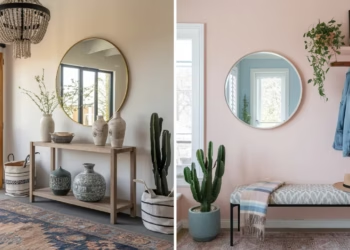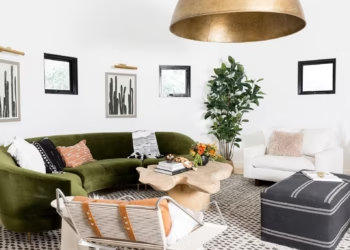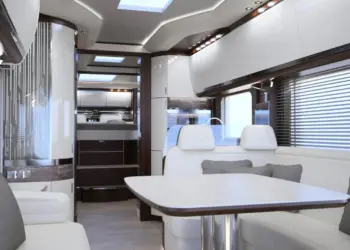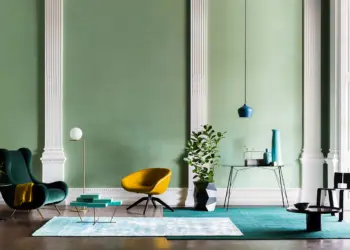When you live a fast-paced life, there is nothing better than having music at your fingertips all day long? Music possesses an extraordinary power that transcends boundaries and evokes profound emotions. If you happen to have the privilege of owning a piano in your abode, why not dedicate an entire room to this magnificent instrument? By meticulously designing and adorning your piano room, you not only elevate its acoustics but also nurture an inspiring ambiance for musicians and music aficionados alike.
Throughout this article, we shall explore an abundant array of ingenious ideas to fashion the quintessential piano room within the confines of your home.
Table of Contents
Choose your piano room location
To ensure a successful piano room, carefully selecting the perfect location within your home is the key. Consider the advantages of basements, extensions, or garage conversions, as they offer fantastic options for a family piano room. These spaces are typically separate from other living areas, requiring less soundproofing.
However, you must be mindful of avoiding the placement of the piano room or studio directly above or below a bedroom, as it could potentially disturb family members. Similarly, take care not to position the recording space near a bathroom or kitchen, as the sounds of running water and flushing might negatively affect the room’s sound quality.

Insulate well
To ensure the utmost protection of your home’s value and resale appeal, it is imperative to prioritize effective insulation. Prospective buyers might find a piano room enticing, but their enthusiasm could wane if they perceive any shortcomings in its insulation from the rest of the house.
A well-implemented soundproofing strategy not only enhances the acoustics of the space but also creates an idyllic environment for music enthusiasts. Be mindful that surfaces like tiles and parquet tend to reverberate sound, prompting a preference for softer alternatives such as plush armchairs and cozy carpets in basic piano rooms.
For more sophisticated setups, consider integrating acoustic ceiling tiles and specialized foam insulation, including the prismatic patterned foam commonly utilized in professional studios. If you require guidance in selecting the ideal foam to suit your unique space, don’t hesitate to seek expert advice from reputable music stores.
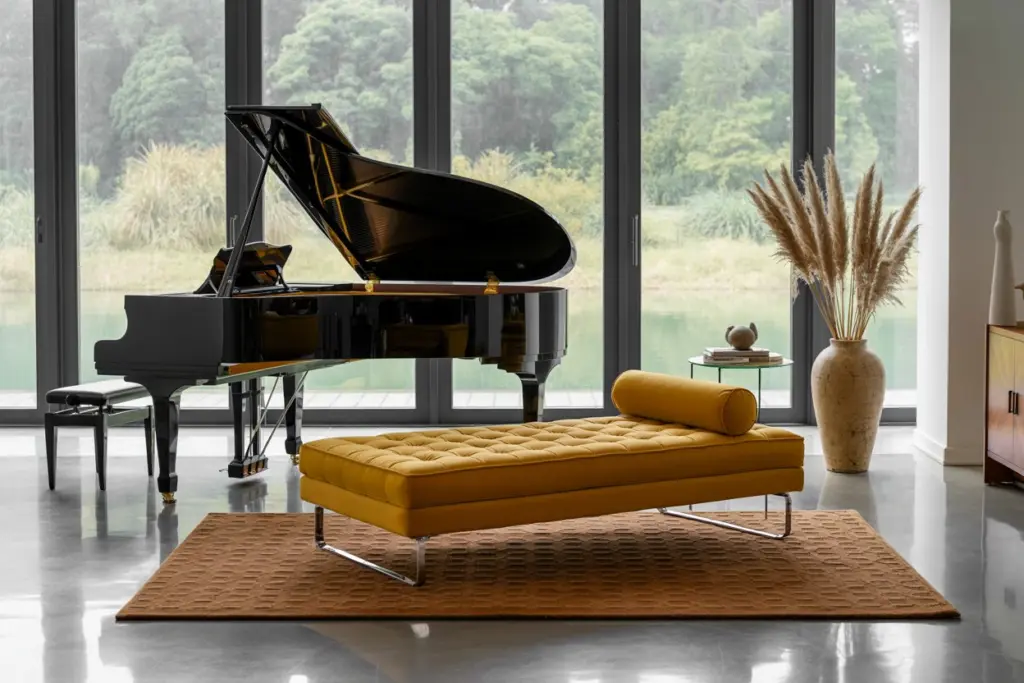
Designing Your Piano Room to Match Your Décor
After making the decisions, it is time to design your music room to align with your chosen decor.
Choosing colors
Selecting the perfect colors is of utmost importance when aiming to create a desired ambience in your piano room. Many people tend to gravitate towards the comforting and calming effect of neutral tones like beige, gray, or white.
However, for those seeking to make a bold statement, vibrant and lively colors that can profoundly influence mood are also popular choices. For instance, the serenity of shades of blue is renowned for its ability to soothe, while the energetic and passionate vibes of red tones can spark creativity. As you embark on this exciting journey, here are a few ideas to help guide your decision-making process:
Neutral tones
Neutral tones such as beige, gray, off-white and taupe are popular choices for piano rooms. These colors provide a soothing, timeless backdrop to enhance the piano and create a serene ambience. Neutral tones are also versatile, allowing you to experiment with other decorative elements.

Shades of blue
A common association of blue with peace and serenity is calmness. Using shades of blue in your piano room can create a soothing atmosphere conducive to concentration. For a light, airy mood, choose soft hues like sky blue, pastel blue, or pale blue.

Touches of color
If you desire to infuse your piano room with a vibrant and lively ambiance, consider incorporating brighter and bolder touches of color. By doing so, you can bring an uplifting and energetic spirit to the space, transforming it into a captivating and inspiring environment.
One effective way to achieve this is by introducing vibrant accessories, such as colorful cushions, eye-catching curtains, or striking decorative pieces, in vivid hues like radiant red, regal purple, or vibrant yellow. These pops of intense color will infuse the room with a sense of dynamism, evoking feelings of enthusiasm and passion, making it an inviting haven for musical creativity and enjoyment.
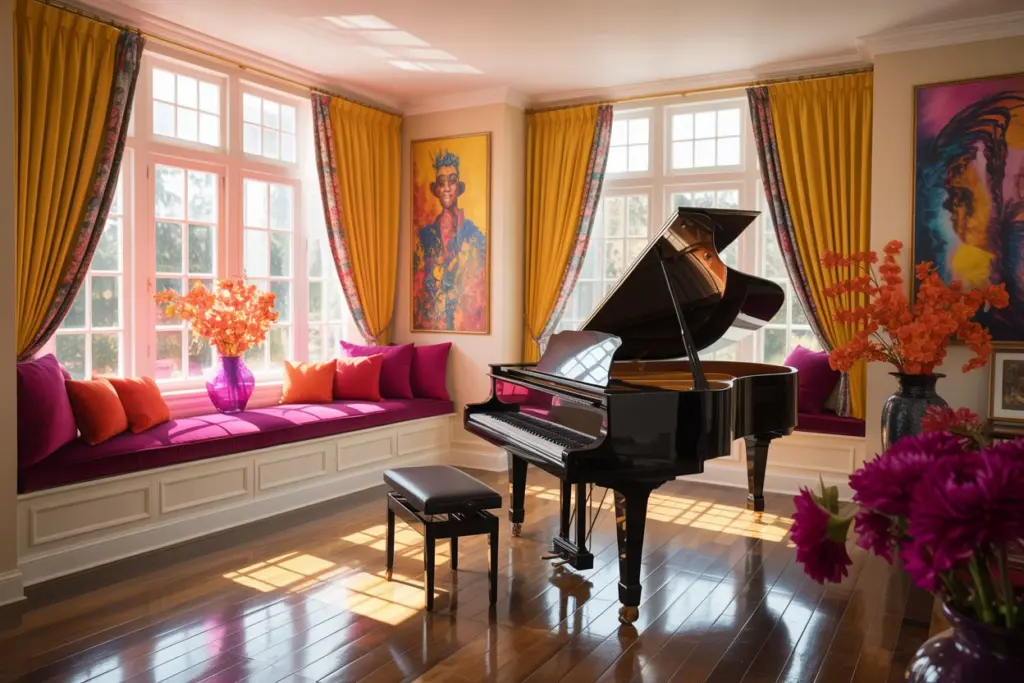
Color harmony
When it comes to selecting colors for your piano room, visual harmony plays a crucial role. It is essential to ensure that the colors you choose not only individually complement the space but also work harmoniously together, creating a coherent and balanced atmosphere. The color wheel can be a valuable tool in this process, guiding you to discover harmonious combinations, such as complementary colors like blue and orange, or analogous colors like blue, blue-green, and green. By carefully considering the color scheme, you can elevate the aesthetic appeal of your piano room, fostering a sense of unity and tranquility that enhances the overall experience of being in the space.
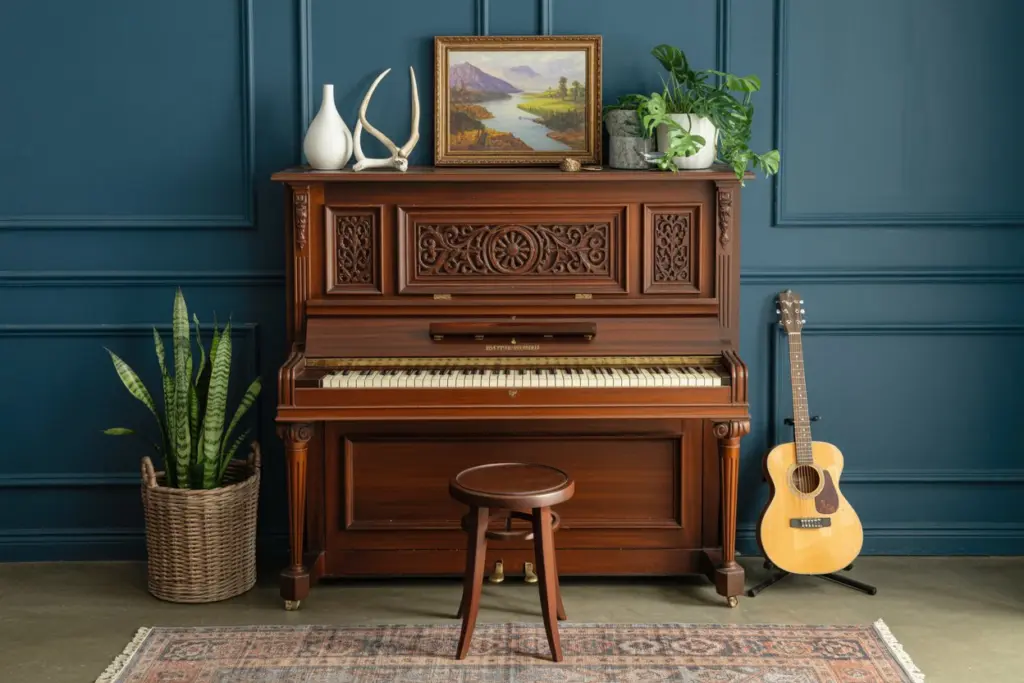
Lighting
Don’t forget to consider the effect of lighting on the colors in your piano room. Natural light can change the appearance of colors throughout the day, while artificial lights can add a warm or cool nuance to the space. Take these variations into account and test colors at different times of the day to make sure they match the desired mood.
Lighting for piano room
Lighting plays a crucial role in creating a warm, welcoming atmosphere in your piano room. Avoid bright fluorescent lights, as they can be too aggressive. Instead, opt for soft, subdued light sources, such as table lamps or wall sconces, to create an intimate atmosphere in the piano room. You can also add string lights for a touch of magic in the piano room. Don’t forget to install curtains or blinds to regulate natural light during daylight hours in the piano room.

Piano room Furniture
The choice of furniture is essential to create a functional and aesthetic space in the piano room. Place your piano in a central position, with enough space around it for musicians to move freely around the piano room. Add a comfortable seat, such as a padded stool or ergonomic chair, for extended playing sessions in the piano room. If you have extra space, consider incorporating shelving or bookcases to store sheet music and music-related books in the piano room. Here are a few points to consider when choosing furniture for your piano room:
Piano
The piano itself is the most important piece of furniture in the piano room. Make sure you choose a quality piano that suits your needs and playing level. You can opt for an elegant grand piano or a more compact upright, depending on the space available in the piano room and your personal preferences. Place the piano in a central position in the room, so that it’s easily accessible and serves as a visual focal point.
Seat
A comfortable seat is essential for extended playing sessions. Choose a padded piano stool or ergonomic chair that offers good lumbar support and comfortable seating. Make sure the seat height is adjustable to allow correct posture when playing the piano. Select a durable and easy-to-clean upholstery for the seat, considering its frequent use.
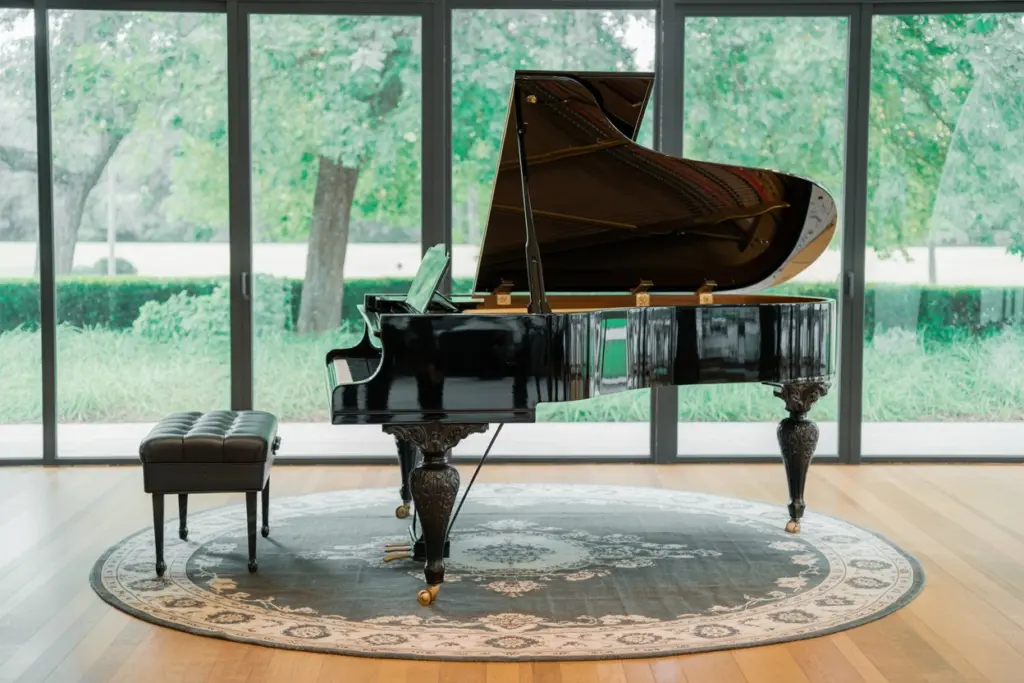
Storage
It’s important to have adequate storage space in the piano room to organize your sheet music, music books and other accessories. Shelves or bookcases are ideal for storing your documents and keeping your piano room organized. Be sure to choose furniture that matches the style and color of the piano room.

Wall shelves
Wall shelves are a great way to display your favorite music books, trophies or other music-related decorative items. They add a personal touch to the piano room and keep your resources close at hand during your practice sessions.

Rugs
Adding a rug to the piano room can serve several purposes. First, it contributes to the aesthetics of the room by adding texture and visual warmth. Secondly, it helps reduce acoustic echo by absorbing some of the reflected sound. Opt for a thick mat that offers good cushioning and is large enough to accommodate the piano and seat.

Wall decoration
In addition to functional furnitures, you can also add decorative elements to the walls of your piano room. Hang paintings, photographs or posters that reflect your love of music. This can include portraits of famous composers, framed sheet music or even images of your favorite artist or band.
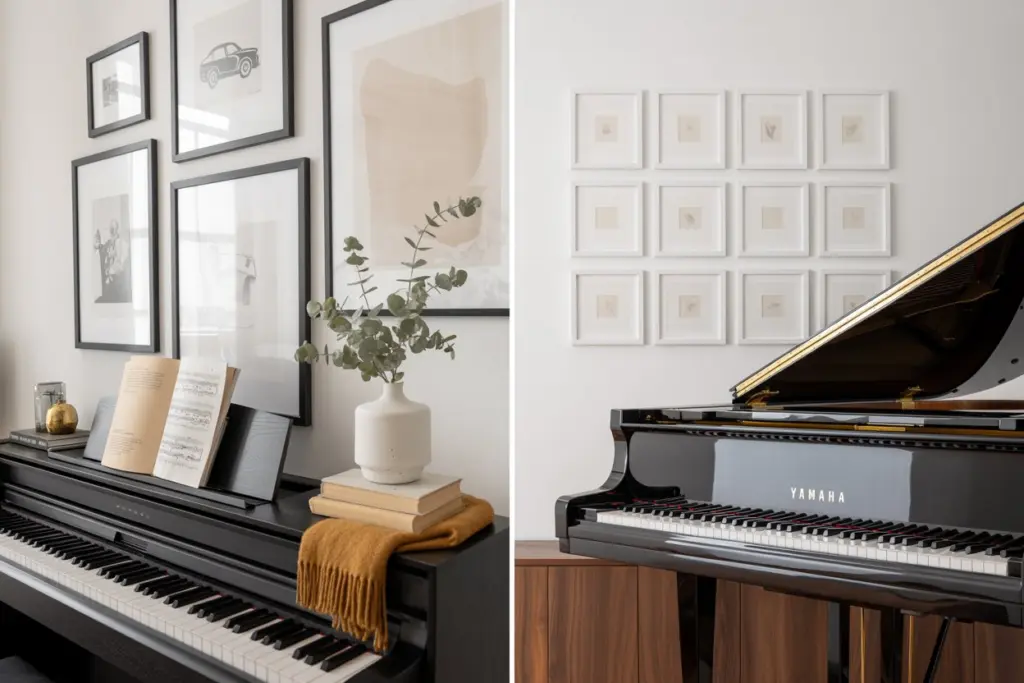
Decorative elements
To personalize your piano room, add decorative elements that reflect your passion for music in the piano room. Hang pictures or posters depicting composers or musical instruments in the piano room. Use carpets or rugs to add warmth and reduce acoustic echo in the piano room. Strategically placing indoor plants in the piano room can help create a pleasant and relaxing atmosphere.
Plants bring a touch of greenery and add a sense of freshness to the space. Choose indoor plants suited to the lighting available in the piano room, such as ferns, palms, or broad-leaved plants. Plants also help to improve air quality by absorbing carbon dioxide and emitting oxygen, which can promote a healthy atmosphere conducive to musical creativity in the piano room. Just make sure you look after the plants properly, providing them with the right water and care to keep them healthy and beautiful in the piano room.
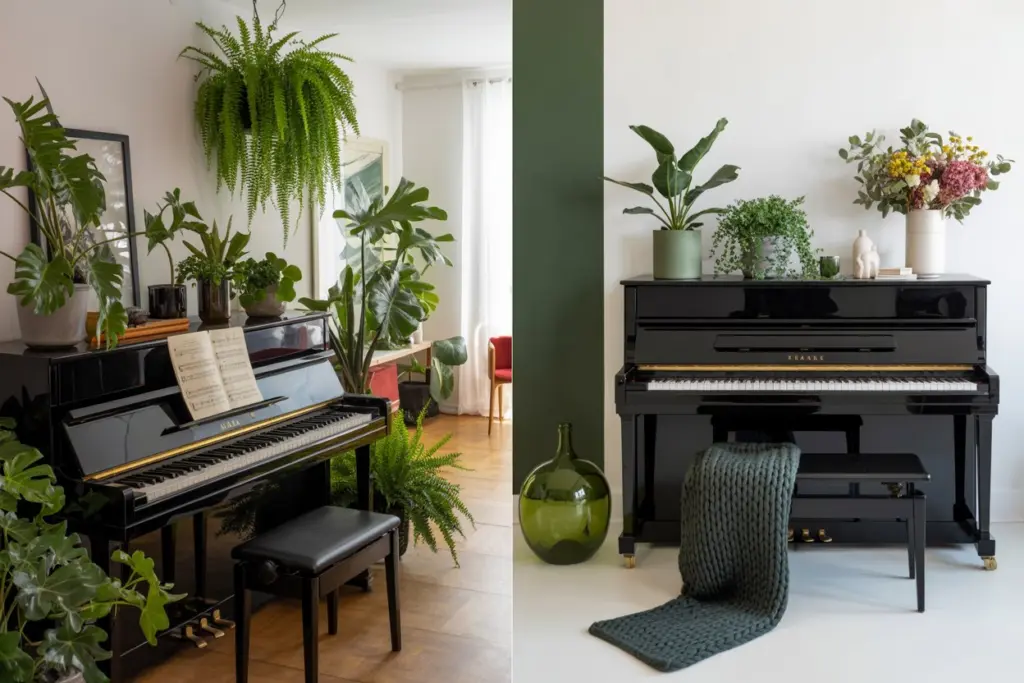
In conclusion, decorating a piano room in the home can be an exciting and rewarding project. By combining the right colors, appropriate lighting, functional furniture, and well-chosen decorative elements, you can create a space that inspires musical creativity and creates a harmonious atmosphere in the piano room. Whether you’re a seasoned pianist or a music lover, a well-decorated piano room will become a place where you can immerse yourself in your passion and create beautiful melodies in the piano room.


